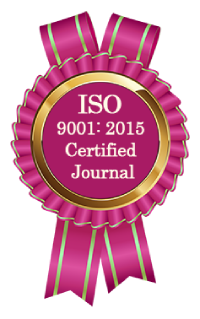
World Journal of Pharmacy and
Pharmaceutical Sciences
( An ISO 9001:2015 Certified International Journal )
An International Peer Reviewed Journal for Pharmaceutical and Medical Research and Technology





 |
|||||||||||||
|
| All | Since 2020 | |
| Citation | 6651 | 4087 |
| h-index | 26 | 21 |
| i10-index | 174 | 83 |
 Search
Search News & Updation
News & Updation
FORMULATION AND EVALUATION OF SUSTAINED RELEASE TABLETS OF ZALTOPROFENMayank Bansal*1, Sumedha Bansal1, Gopal Garg2
1Department of Pharmaceutical Technology, Meerut Institute of Engineering and Technology, Baghpat Bypass, NH-58, Meerut-250005, Uttar Pradesh, India. 2V.N.S. Institute of Pharmacy, Bhopal, Madhya Pradesh, India.
ABSTRACT Objective: An appropriately designed sustained-release drug delivery system can be a major advancement towards solving problems concerning controlling the rate of drug delivery. Matrix tablets are an interesting option when developing an oral sustained release formulation. The present study focuses on oral sustained-release dosage forms and types of various polymers used to formulate matrix tablets of Zaltoprofen. Water soluble polymers such as polyvinylpyrrolidone may be used to increase the dissolution rates of poorly soluble drugs. Hydroxy Propyl MethylCellulose (HPMC) is cellulose ether which may be used as the basis for hydrophilic matrices for sustained release oral delivery. The aim of study is to develop a once daily sustained- release tablet dosage form of Zaltoprofen by optimizing the release profile of drug through varying the composition of polymers. Method: Sustained release tablets of Zaltoprofen were prepared by wet granulation method using water soluble polymers such as polyvinylpyrrolidone and different grades of cellulose ether like HPMC both intra and extragranularly. Polyvinylpyrrolidone (PVPK30) dissolved in isopropyl alcohol was used as the granulating agent. Various grades of microcrystalline cellulose (Avicel) were used in granules and matrices to control the release rate. Tablets were subjected to physicochemical characterization such as thickness, hardness, friability, weight uniformity, drug content, disintegration time, in vitro drug release, and stability studies. The kinetics of the dissolution process was studied by analyzing the dissolution data using five kinetic models, the zero-order equation, the first-order equation, the Higuchi square root equation, the Hixson-Crowell cube root law and Korsmeyer-Peppas equation. Result & Discussion: All formulations were found to be satisfactory when evaluated for thickness, weight uniformity, hardness, friability, drug content uniformity and in-vitro drug release. The in vitro drug release in optimized formulation C11 was found to be 99.23 % in 24 hours. C11 also showed satisfactory hardness (6.55±0.0614 kg/cm2), friability (0.495%±1.258), drug content (99.47%±0.0565) and weight variation (402.65±0.3118 mg). The analysis of the dissolution kinetic data shows that it follows the first order kinetics and the release process involves erosion / diffusion and an alteration in the surface area and diameter of the matrix system, as well as in the diffusion path length from the matrix drug load during the dissolution process. Keywords: Post-trauma chronic inflammation, Sustained-release, Matrix tablets, Polymers, HPMC. [Download Article] [Download Certifiate] |
